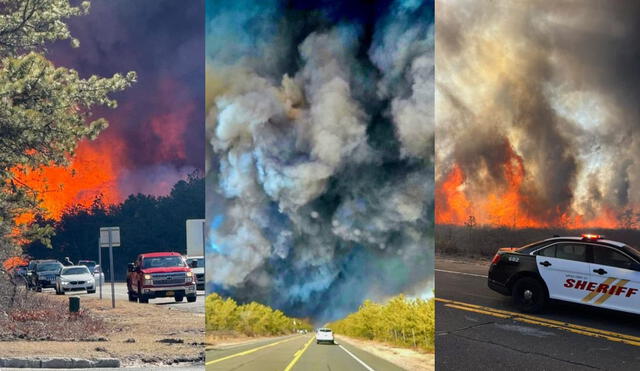Long Island wildfires: New York governor issues state of emergency
Multiple fires along Sunrise Highway near Riverhead and East Hampton are spreading due to high winds and low humidity. Emergency crews are responding, and residents are urged to evacuate and exercise caution.

On March 8, New York Governor Kathy Hochul declared a state of emergency as wildfires continue to rage across Long Island, destroying homes, displacing thousands, and filling the skies with thick smoke. The fires, fueled by unseasonably dry conditions and strong winds, have become one of the worst natural disasters to hit the region in decades. Emergency crews are working around the clock to contain the blazes, but the situation remains critical.
The fires have already scorched over 10,000 acres, with neighborhoods in Nassau and Suffolk counties bearing the brunt of the devastation. Residents have been forced to evacuate, leaving behind everything as they flee for safety. The state of emergency declaration aims to mobilize additional resources and coordinate a swift response to the crisis.
New York governor issues state of emergency
Strong winds have intensified the flames, sending thick plumes of smoke into the air, forcing the evacuation of a military base, and leading to the shutdown of a major highway. Governor Hochul has urged residents to heed evacuation orders and avoid unnecessary travel to allow emergency responders to do their jobs effectively.
She also stated that emergency crews were actively battling the fires in the Pine Barrens, a heavily wooded region that includes commuter towns east of New York City. “Right now, this situation remains out of control,” she told Long Island’s News 12. “We're witnessing evacuations in the Westhampton area.”
As videos of the wildfires began circulating on social media, the Town of Southampton issued a public advisory, urging residents to avoid lighting recreational fires due to the heightened wildfire risk.
Wildfires devastate Long Island
The fires have left a trail of destruction in their wakes, as over 200 structures have been damaged or destroyed, leaving families homeless. Local businesses and farms have also suffered significant losses.
There are concerns about air quality, due to the thick smoke which has blanketed the region, prompting health warnings. The environmental impact is also severe, with wildlife habitats destroyed and carbon emissions from the fires contributing to air pollution.
Several factors have contributed to the rapid spread of the fires:
- Dry conditions: A lack of rainfall and low humidity have turned Long Island into a tinderbox.
- Strong winds: Gusts of up to 40 mph have fanned the flames, making containment efforts extremely challenging.
- Urban sprawl: The proximity of homes to wooded areas has increased the risk of property damage and hindered firefighting efforts.












